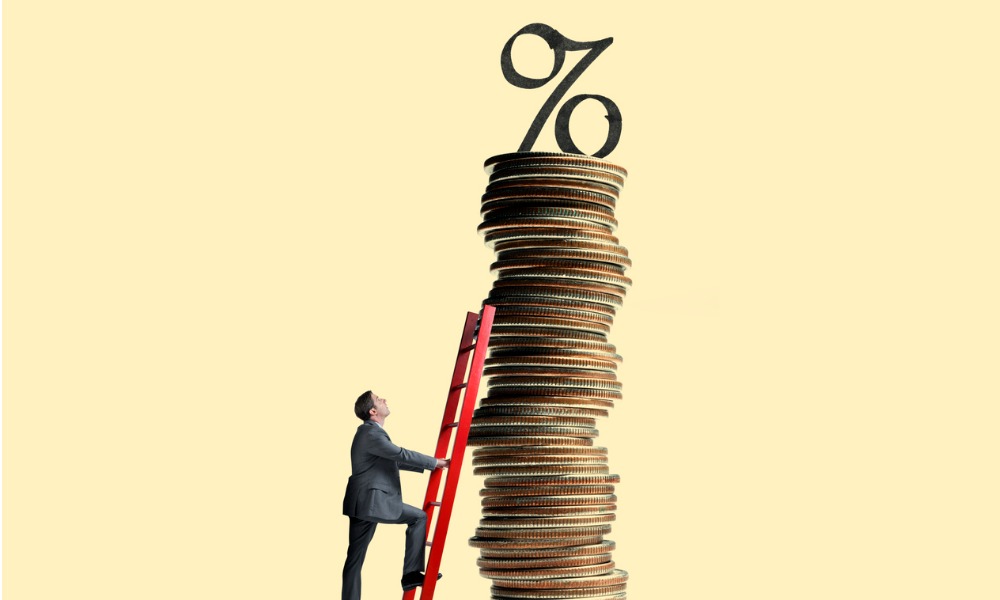"RBNZ should be worried about just how developed the wage price spiral has become," economists say

In their Quarterly Economic Outlook, ANZ economists said it was “very likely” the Reserve Bank of New Zealand would raise the OCR higher than earlier thought “if the labour market doesn’t show signs of loosening soon.”
Read more: NZ economy red-lining with inflation stifling growth – report
The OCR currently sits at 3.5% and is tipped to be lifted another 75 basis points in the Nov. 23 review, with ANZ economists now predicting a peak of 5% next year.
But while they do expect CPI inflation to slow down from the September quarter’s 7.2%, the ANZ economists said they still see “significant upside risk” to the domestic inflation outlook, interest.co.nz reported.
“Indeed, the [September quarter] read on the labour market was worryingly tight, with records broken all around and recent business survey data from the NZIER’s Quarterly Survey of Business Opinion showing labour as a limiting factor ratcheting up to record levels in Q3,” the ANZ economists said.
For the central bank to unlock “inflation target achieved” status, they said it needs softer domestic demand to translate into softer demand for labour.
“Without that, the wage-price spiral continues, core and domestic inflation pressures remain too high, and the OCR will need to be lifted even higher,” the ANZ economists said.
That’s exactly how the data have evolved over the past 18 months or so, they said, adding that they’re “not yet convinced domestic and core CPI inflation has stopped surprising on the upside.”
The economists said wage growth is where “the rubber meets the road" for the “sticky domestic inflation pulse,” interest.co.nz reported.
“And with average hourly earnings surprising all forecasts in Q3 at a record high of 8.6% y/y the RBNZ should be worried about just how developed the wage price spiral has become,” they said. “Some large retail-sector wage settlements of late have been well into double digits and have the potential to be the new benchmark for upcoming negotiations.”
“Not all wage growth is created equal” though, the ANZ economists noted.
“At one end of the spectrum you have wages chasing their tail: that’s when higher wages lead to higher prices, which then get factored into wage negotiations” they said. “This is the end of the spectrum you don’t want to be in, as while wage growth in this scenario is good insofar that it prevents inflation from eroding real household incomes, the improvement in real incomes is likely to prove fleeting as inflation persists at high rates. But that is unfortunately a fair description of the current wage-price spiral dynamics we are seeing.
“At the other end of the spectrum, you have wage growth driven by improving labour productivity. In this case, a given amount of labour input yields higher output for businesses, who can then afford to pay a higher wage, while not having to increase their prices. Households get the benefit of higher wage growth without the self-defeating flow-on effect on inflation eating that up. But while improved labour productivity would be a wonderful thing right now, it’s not an easy thing to generate. In fact, productivity has taken something of a hit in the wake of the pandemic, and that’s just made the inflation problem worse.”
Read next: New Zealand economy hit by labour shortages
While CPI-adjusted income has returned to positive-growth territory, the economists said many Kiwi households would find the rising interest rate environment seriously challenging, interest.co.nz reported.
“Indeed, any household with a high debt-to-income ratio will find it relatively hard to hide from the impact of rising rates, with strong income growth providing only a partial offset,” the ANZ economists said. “And given typical re-fixing lags, the peak impact for these households is yet to come.”
But to date, little evidence suggested that a “meaningful lift” in forced house sales was underway, they said.
“In fact, new listings data for October were unseasonably weak, suggesting potential sellers are choosing to wait it out,” the ANZ economists said. “All else equal, this will be keeping growth in inventories contained (as house sales slow), keeping the market tighter than otherwise and preventing prices from falling as much or as fast as they would if listings were higher. It’s all been a very orderly adjustment so far, with very little blood on the floor. While around 2% of households are currently in negative equity, these remain, on the whole, paper losses.”
But for house prices, there’s still no escaping the fundamentals, the economists said.
New housing supply is much higher than new demand, housing inventories are at a six-year high, affordability (as measured by house prices relative to incomes) still has a long way to go to get to half-respectable levels, and debt-servicing costs are still lifting.
“We see this culminating in around a 18% peak-to-trough decline in house prices, or 27% when deflated by [Quarterly Employment Survey] wage growth,” they said. “In income adjusted terms, that’s a full unwinding of the pandemic stimulus / FOMO [fear of missing out] driven bump.”
Whether or not New Zealand avoids recession remains a line ball call, the ANZ economists said.
“But it’s important to note that not all recessions are created equal,” they said. “A recession that brings about a transition from the currently over-stretched economy towards sustainable expansion, while also avoiding a significant household income shock, may not be as bad as the R-word sounds, particularly from a long-run economic stability perspective.”
And if it means squashing the current wage-price spiral before it necessitates even more aggressive action by the RBNZ, the ANZ economists said then it may be a cost worth paying, interest.co.nz reported.
“One way or another, the economy needs to find its way to a sustainable path,” they said. “Price (and economic) stability is at stake, and so too is very hard-won central bank credibility. Hopefully, a 5% OCR is enough to get the job done.”



